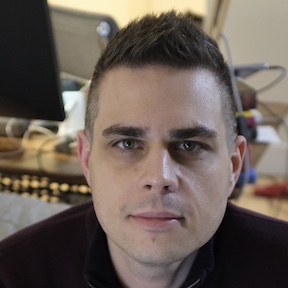Managing Engineers Through Seniority
A recent conversation with a colleague crystallized one of the most challenging aspects of engineering management: providing clear guidance for promotion to senior roles. Their direct report was seeking a roadmap to senior engineer, and my colleague struggled to articulate that path in a way that felt satisfying.
This challenge strikes at the heart of how we evaluate engineering careers. Engineers, trained in logic and systematic thinking, naturally seek concrete steps: “I’m at point A; I want to be at point B; give me the algorithm to get there.” This desire for clarity isn’t unreasonable. Many senior engineering skills are indeed concrete and measurable. A Senior iOS engineer, for instance, should be able to bootstrap new projects in Xcode, profile application performance, drive architecture discussions, and establish CI/CD pipelines. One could imagine creating a checklist: “Master 80% of these skills, and you’re ready for senior level.” This approach would certainly appeal to engineers who thrive on quantifiable goals and measurable progress.
But here’s the deeper truth: engineering careers transcend checklists. This becomes increasingly apparent as we advance in seniority. The skills that differentiate truly senior engineers become progressively more nuanced, more interpersonal, and more dependent on judgment forged through experience.
The senior engineering journey marks a critical pivot. We transition from directly applying technical skills to leveraging our experience and judgment in broader ways: leading teams, mentoring colleagues, sponsoring growth opportunities, guiding technical decisions, and building stakeholder relationships. These skills resist simple measurement. While I can outline activities to develop stakeholder communication—regular check-ins, structured updates, collaborative planning sessions—completing these activities doesn’t automatically translate to mastery. There’s no unit test that turns green to signal you’ve arrived.
This ambiguity can be particularly frustrating because there’s no boolean outcome, no clear “mission accomplished” moment. These skills involve complex human dynamics and circumstances beyond our control. Stakeholders might be collaborative or combative; project conditions might be favorable or challenging. Even positive outcomes don’t necessarily indicate skill mastery—it would be unfair to evaluate engineers based solely on stakeholder satisfaction or project success when every team and situation is unique.
Moreover, these advanced skills aren’t about universal popularity or manipulating human behavior like we might refactor code. Instead, they’re about navigating the intricate mesh of interpersonal, organizational, and technical challenges to achieve often-ambiguous goals through well-reasoned trade-offs.
This inherent subjectivity creates risk in evaluation. As managers, our unconscious biases—which affect all of us, whether we acknowledge them or not—can influence our assessments. Even with the most rigorous self-awareness, the mere possibility of bias can lead reports to question the fairness of evaluations. For engineers accustomed to objective technical assessments, this shift toward subjective evaluation can feel particularly jarring, amplifying any concerns about fairness.
So how do we, as engineering managers, balance our commitment to fair, unbiased evaluation with the reality that senior-level skills involve significant subjective judgment? And how do we provide this guidance in a way that feels equitable and actionable to our reports?
The answer lies in continuous, meaningful dialogue through consistent one-on-one meetings. While project outcomes, peer feedback, and team dynamics provide valuable signals, they’re imperfect proxies for what truly matters:
- Professional Performance: Is your report meeting and exceeding role expectations?
- Personal Context: Are there relevant personal factors they choose to share that complete the picture?
- Skill Development: How are they progressing in expanding their capabilities? Do they need new challenges?
- Career Satisfaction: Are they energized by their current direction, or do they need help finding a new path?
Understanding these dimensions requires ongoing conversation through regular one-on-ones. These discussions should be informed by external signals but not dominated by them. Rather than confronting reports with secondhand feedback (“I heard you struggled with X”), use your broader context to guide open-ended discussions when they raise challenges. This approach helps them grow through difficulties rather than simply dealing with outcomes.
These regular conversations reveal progress in hard-to-measure skills more clearly than any checklist could. They shift focus from outcomes to journey. When challenges arise, they’re rarely surprises because you’ve been actively involved in the navigation process through mentoring and coaching. Whether outcomes are positive or negative, you understand how your report leveraged their skills and where they pushed their boundaries. This continuous feedback loop makes your guidance more specific, actionable, and credible.
While this approach doesn’t eliminate subjectivity, it creates shared confidence in the growth trajectory. Reports can immediately address unclear or seemingly unfair feedback, and course corrections happen in real-time. This minimizes misaligned expectations and reduces communication gaps that could otherwise lead to frustration months later. The more subjective the skill evaluation, the more crucial this ongoing dialogue becomes to maintain trust and perceived fairness.
This management style might sound intensive, but I’ve found it actually reduces the need for hand-holding. As engineers gain experience, these skills often develop organically, even if progress feels uneven. Experience breeds confidence in facing ambiguous challenges. Conversations naturally evolve from tactical “how-to” discussions to strategic explorations of “what do you think?” Your role shifts from mentorship to coaching, helping reports develop the same intuition and judgment you demonstrate in your discussions together.
The path to senior engineer may not be as straightforward as a technical specification, but through consistent dialogue and thoughtful guidance, we can make the journey clearer and more achievable for our reports.
